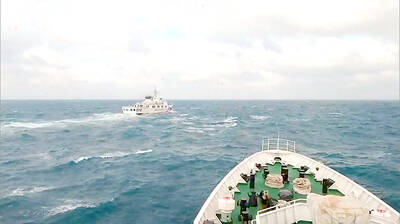The Red Cross Society of the Republic of China (ROC), which has raised nearly NT$1.7 billion (US$58.5 million) for disaster victims in Japan, more than all other Taiwanese charities combined, is facing criticism that most of the money has yet to leave Taiwan.
The complaints that only about a quarter of the money earmarked for Japan had been given to charitable aid efforts by yesterday came as attention focused on how the organization is managing the fund and how it plans to allocate the money.
“Every dollar we receive ultimately goes to Japan, but the donation drive is still ongoing and as a result, the dates and numbers are still subject to changes,” Red Cross Society of the ROC deputy secretary-general Lin Hsiu-fen (林秀芬) said.
The organization, partially state-run, has raised more than half of the NT$3 billion — including NT$300 million given by the government — pledged in aid by Taiwanese for Japan after a devastating earthquake and tsunami on March 11.
However, figures from the organization show that only US$15 million has been transferred to the Japanese Red Cross Society, the bulk of which was only wired yesterday after an internal decision was made on March 31.
The rest of the funds are sitting in a bank account as the group awaits more information on the kind of aid that Japanese relief groups require, officials with the Red Cross Society of the ROC said.
The interest earned from the money would be included in the final donation, Lin said.
However, the delay has infuriated online groups, with more than 20,000 people, as of yesterday, having joined a Facebook group calling on the organization to either immediately wire the remaining amount to Japan or refund all donations.
“What was given to Japan belongs to Japan,” Chiang Pin (江斌), posted on the Facebook group. “How Japan chooses to use that money is their business. [Taiwan’s Red Cross] should cough up.”
Another, Chen Jui-hsiung (陳瑞雄), said: “This time I donated directly to Japan’s representative office. Based on experience, I already had no confidence in the Red Cross Society.”
Phones were ringing around the clock at the Red Cross offices in Taipei, where volunteers were scrambling to answer calls about how the donations were being used. On average, it took four or five tries before callers were able to get through.
“As per our long-standing policy, we will honor refund requests. Our donors’ wishes are important to us and we will cooperate,” Lin said in response to the Facebook group, adding that the request would increase administrative costs.
The Red Cross Society of the ROC has come under fire in past.
In 2007, it was accused of misusing government subsidies. Financial statements from the organization showed that up to a third of its annual disaster relief fund had been set aside for office expenses between 2003 and 2006, in direct violation of caps on expenses.
The organization has also been criticized for its ongoing policy of giving kickbacks for fundraisers, which reached 15 percent in its Taipei chapter in 2005 before the practice attracted the attention of regulators.
At a press conference at the legislature yesterday, Democratic Progressive Party (DPP) lawmakers said they were concerned about the transparency of the fund for Japan and questioned how much would be lost in administrative and overhead costs.
“There are many valid concerns and I think [the Red Cross] needs to make themselves very clear,” DPP Legislator Yeh Yi-jin (葉宜津) said. “If they can’t, we will call on the public to boycott all donations to this secretive organization.”
Red Cross Society of the ROC officials said that many concerns were based on misconceptions about how the organization operates.
As per past practice, it has always distributed large disaster relief funds in stages depending on the needs of each particular relief operation. In the case of Japan, more funds will be distributed once long-term reconstruction efforts are finalized.
“The goals of the Red Cross’ efforts in Japan are not just disaster relief, but also long-term reconstruction efforts. We give the money in stages depending on the needs of disaster-zone residents over time,” the organization said in a statement.
Regarding claims by DPP Legislator Gao Jyh-peng (高志鵬) that senior organization administrators made as much as NT$200,000 a month, Red Cross Society of the ROC officials said that most senior administrators “would be happy if they earned half that amount.”
However, organization officials declined to answer questions on what percentage of the NT$1.7 billion received so far would be diverted to overhead costs and how much would eventually be wired to Japan.
It would be “unfair” to separate the fund this way, they said.
Organization officials said a final tally of the fund would be made on May 10 when the donation program ended.
Detailed documents on how the money was spent would be made public at that time, officials said.
Minister of Foreign Affairs Timothy Yang (楊進添) said he believed the Red Cross Society of the ROC would handle the money properly according to the needs of Japan in its disaster relief and reconstruction projects.
“Both the Red Cross Society of the ROC and the Japanese Red Cross Society are trustworthy,” Yang said.
Whether donations should be sent to Japan in instalments and how the money should be spent are decisions that should be made by the Red Cross Society of the ROC and Japanese Red Cross Society, Yang said.
Additional reporting by Shih Hsiu-chuan

The Ministry of Foreign Affairs (MOFA) yesterday said it is closely monitoring developments in Venezuela, and would continue to cooperate with democratic allies and work together for regional and global security, stability, and prosperity. The remarks came after the US on Saturday launched a series of airstrikes in Venezuela and kidnapped Venezuelan President Nicolas Maduro, who was later flown to New York along with his wife. The pair face US charges related to drug trafficking and alleged cooperation with gangs designated as terrorist organizations. Maduro has denied the allegations. The ministry said that it is closely monitoring the political and economic situation

Conflict with Taiwan could leave China with “massive economic disruption, catastrophic military losses, significant social unrest, and devastating sanctions,” a US think tank said in a report released on Monday. The German Marshall Fund released a report titled If China Attacks Taiwan: The Consequences for China of “Minor Conflict” and “Major War” Scenarios. The report details the “massive” economic, military, social and international costs to China in the event of a minor conflict or major war with Taiwan, estimating that the Chinese People’s Liberation Army (PLA) could sustain losses of more than half of its active-duty ground forces, including 100,000 troops. Understanding Chinese

UNRELENTING: China attempted cyberattacks on Taiwan’s critical infrastructure 2.63 million times per day last year, up from 1.23 million in 2023, the NSB said China’s cyberarmy has long engaged in cyberattacks against Taiwan’s critical infrastructure, employing diverse and evolving tactics, the National Security Bureau (NSB) said yesterday, adding that cyberattacks on critical energy infrastructure last year increased 10-fold compared with the previous year. The NSB yesterday released a report titled Analysis on China’s Cyber Threats to Taiwan’s Critical Infrastructure in 2025, outlining the number of cyberattacks, major tactics and hacker groups. Taiwan’s national intelligence community identified a large number of cybersecurity incidents last year, the bureau said in a statement. China’s cyberarmy last year launched an average of 2.63 million intrusion attempts per day targeting Taiwan’s critical

‘SLICING METHOD’: In the event of a blockade, the China Coast Guard would intercept Taiwanese ships while its navy would seek to deter foreign intervention China’s military drills around Taiwan this week signaled potential strategies to cut the nation off from energy supplies and foreign military assistance, a US think tank report said. The Chinese People’s Liberation Army (PLA) conducted what it called “Justice Mission 2025” exercises from Monday to Tuesday in five maritime zones and airspace around Taiwan, calling them a warning to “Taiwanese independence” forces. In a report released on Wednesday, the Institute for the Study of War said the exercises effectively simulated blocking shipping routes to major port cities, including Kaohsiung, Keelung and Hualien. Taiwan would be highly vulnerable under such a blockade, because it